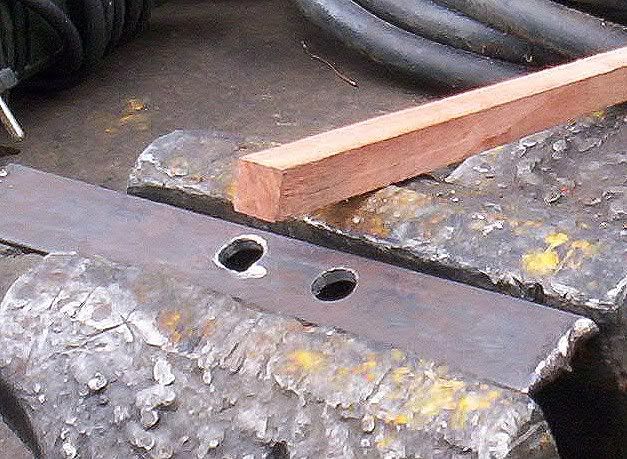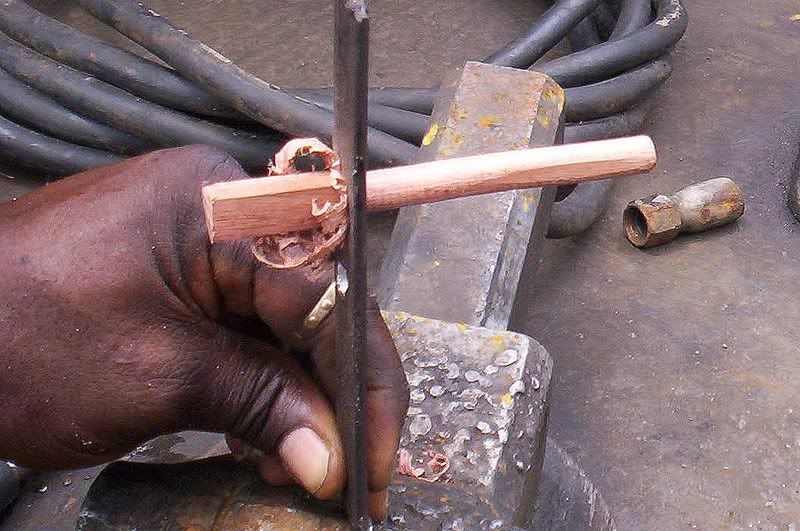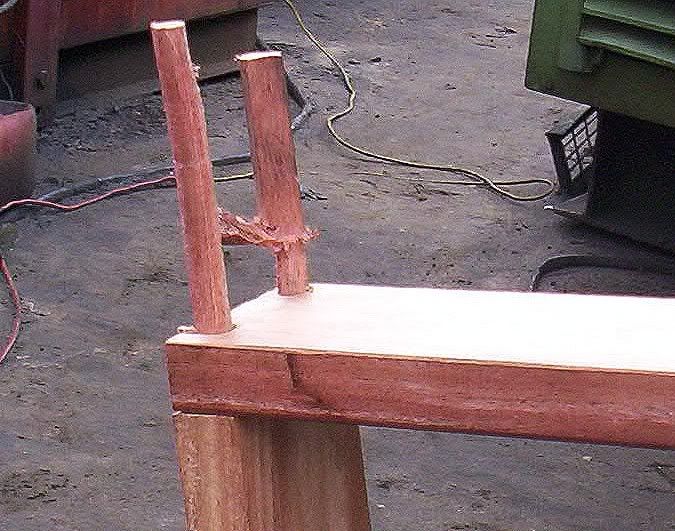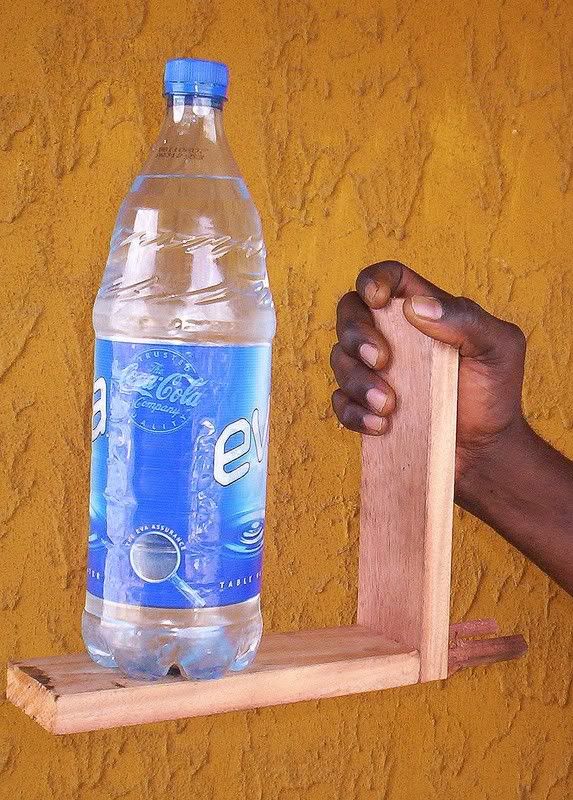While I look with awe and admiration at a dove tail or a tongue and groove joint; alas, to do it is beyond my ken. I boldly assume I am not the only one (judging from a post or two I have seen).
A somewhat simpler way of making a joint that does have some strength, but at the same time requiring only simple tools and even I can do it.
Let us start in a time honored fashion with a square peg and a round hole.

next we gently whack that square peg through the round hole.

we join the wood, secure with a nail or two (and using some glue, cramps and a try square when making a box is not a bad idea either). We then drill a couple of holes, same diameter as the round hole mentioned above, right through the two woods to be joined.

we now dip the once square peg, now a round dowel, into glue and hammer them into the pre-drilled holes. Finito.
Best done while all is still secured with a cramp or two.

the joined wood shown is only doweled, no glue was used here - but as you can see, it has considerable more strength than a simple nailed joint.
Oh, this works quite alright !